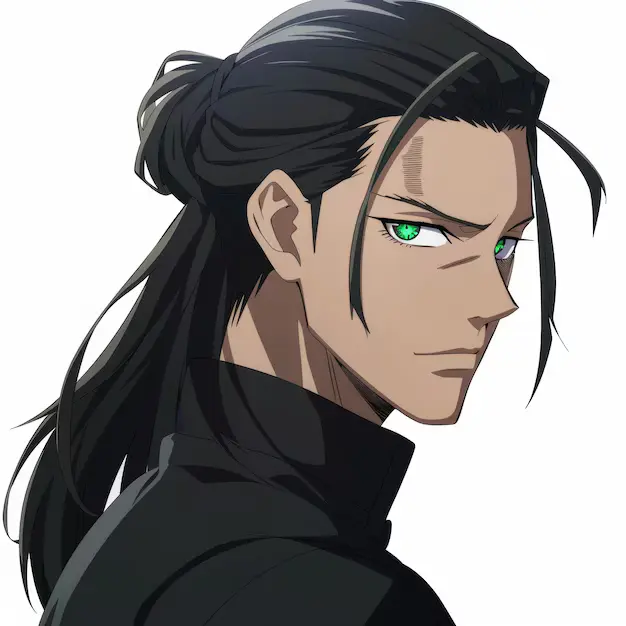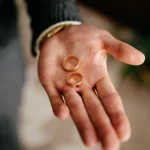Drawing anime hair can seem like a daunting task, especially when it comes to capturing the unique styles that make each character stand out. If you’re an aspiring artist or simply a fan of anime, learning how to draw male anime hair can be both fun and rewarding. In this guide, we’ll break down the process into simple steps, share personal anecdotes, and offer expert insights to help you create striking and dynamic anime hairstyles.
Table of Contents
ToggleUnderstanding the Basics of Anime Hair
Before diving into the drawing process, it’s crucial to understand the fundamental elements of anime hair. Anime hair is often characterized by its exaggerated and stylized nature. It can range from sleek and smooth to wildly spiky or tousled. Here’s a quick overview of what makes anime hair distinct:
- Volume and Shape: Anime hair typically has a lot of volume. The hair is often drawn in layers to create a dynamic and three-dimensional appearance.
- Exaggeration: Unlike realistic hair, anime hair is exaggerated. The shapes are bold and pronounced, and the lines are sharp and clean.
- Texture: Depending on the character’s personality, the texture can vary from smooth and flowing to spiky and unkempt.
Step-by-Step Guide to Drawing Anime Hair for Males
1. Start with the Basic Shape
Begin by drawing the basic head shape and hairline. This will serve as the foundation for your hair drawing. Remember that anime characters often have larger heads and more pronounced features, so keep this in mind when sketching the outline.
Personal Anecdote: When I first started drawing anime, I struggled with getting the proportions right. I found it helpful to practice drawing basic head shapes and hairlines until I felt more comfortable. It’s a great way to get the feel for how hair interacts with the character’s head.
2. Define the Hair Sections
Anime hair is usually divided into sections or clumps. These sections help in creating the layered look that is characteristic of anime styles. Draw rough lines to indicate where each section of hair will fall. Start from the top and work your way down, keeping the lines flowing and natural.
Expert Insight: Ryohei Fukamachi, a renowned manga artist, emphasizes, “The foundation of anime male hair is volume. Start by defining the base shape and gradually add layers of hair to create a dynamic look” (Anime News Network).
3. Add Texture and Detail
Once you’ve defined the basic sections, begin adding details. For spiky hair, draw sharp, angular lines. For smoother styles, use softer, curved lines. Pay attention to the direction of the hair growth and ensure the details complement the overall shape.
Personal Anecdote: I remember when I first tried drawing spiky anime hair. I was frustrated with how stiff and unnatural it looked. After some practice, I realized that adding varying lengths and angles to the spikes made the hair look more dynamic and believable.
4. Refine and Clean Up
With the basic structure and details in place, it’s time to refine your drawing. Clean up any unnecessary lines and adjust the details to enhance the overall look. Erase any stray marks and ensure that the hair sections blend smoothly.
Expert Insight: Artgerm, a popular digital artist, suggests, “Experiment with different hair textures, from spiky to flowing. The key is to exaggerate the shapes and lines to create a striking visual impact” (Artgerm).
5. Add Shading and Highlights
Shading and highlights are crucial for giving your anime hair a more realistic and polished look. Use a darker shade for the roots and areas where the hair overlaps. Add lighter shades or highlights to the tips and areas where light would naturally hit.
Expert Insight: L’Oréal Professionnel advises, “Using the right hair products is essential for creating a long-lasting scruffy bun. Opt for products that provide hold without stiffness” (L’Oréal Professionnel). While this advice is for hair care, the principle of balancing light and dark areas applies to drawing hair as well.
6. Incorporate Character Personality
Tailor the hairstyle to fit the character’s personality. A strong, determined character might have spiky hair, while a gentle, more reserved character could have softer, flowing locks. Consider how the hairstyle reflects the character’s traits.
Expert Insight: Daisuke Richelle, an anime character designer, notes, “Pay attention to the character’s personality when designing their hair. A strong, determined character might have spiky hair, while a gentle character could have softer, flowing locks” (Actuabd).
Tips for Improving Your Anime Hair Drawing Skills
Practice Regularly
The more you practice, the better you’ll get. Try drawing different hair types and styles to expand your skills. Observe real-life hair and try to translate those observations into your anime style.
Expert Insight: An Anime Tutorial YouTuber advises, “Practice makes perfect! Don’t be discouraged if your first attempt isn’t flawless. With time and experimentation, you’ll master the art of the short hair bun” (YouTube).
Join Online Communities
Participating in online art communities can be incredibly beneficial. You can share your work, receive feedback, and learn from other artists. Platforms like DeviantArt and Reddit’s r/AnimeArt are great places to connect with fellow anime enthusiasts.
Expert Insight: According to an Anime Art Community, “Join online communities to share your work and get feedback. Learning from other artists can help you improve your anime hair drawing skills” (Anime Art Community).
Use Reference Books and Tutorials
Reference books and tutorials can provide valuable insights and techniques for drawing anime hair. Studying the work of your favorite artists can also inspire and guide you.
Expert Insight: A representative from an anime manga book suggests, “Reference books and tutorials can provide valuable insights into anime hair drawing techniques. Study the work of your favorite artists to learn their styles” (Amazon).
Final Thoughts
Drawing anime hair for males involves a combination of understanding the basics, practicing regularly, and refining your techniques. By focusing on volume, texture, and character personality, you can create striking and dynamic hairstyles that bring your anime characters to life. Remember, the journey of learning and improving is just as important as the final result. Enjoy the process and let your creativity flow!
For further insights into art and creativity, studies such as “The Psychology of Creativity” (Journal of Creative Behavior) and “The Role of Practice in Skill Acquisition” (Journal of Experimental Psychology: Human Perception and Performance) highlight the importance of consistent practice and creative thinking in artistic development. Keep these principles in mind as you continue to refine your skills and develop your unique style.
Happy drawing!




